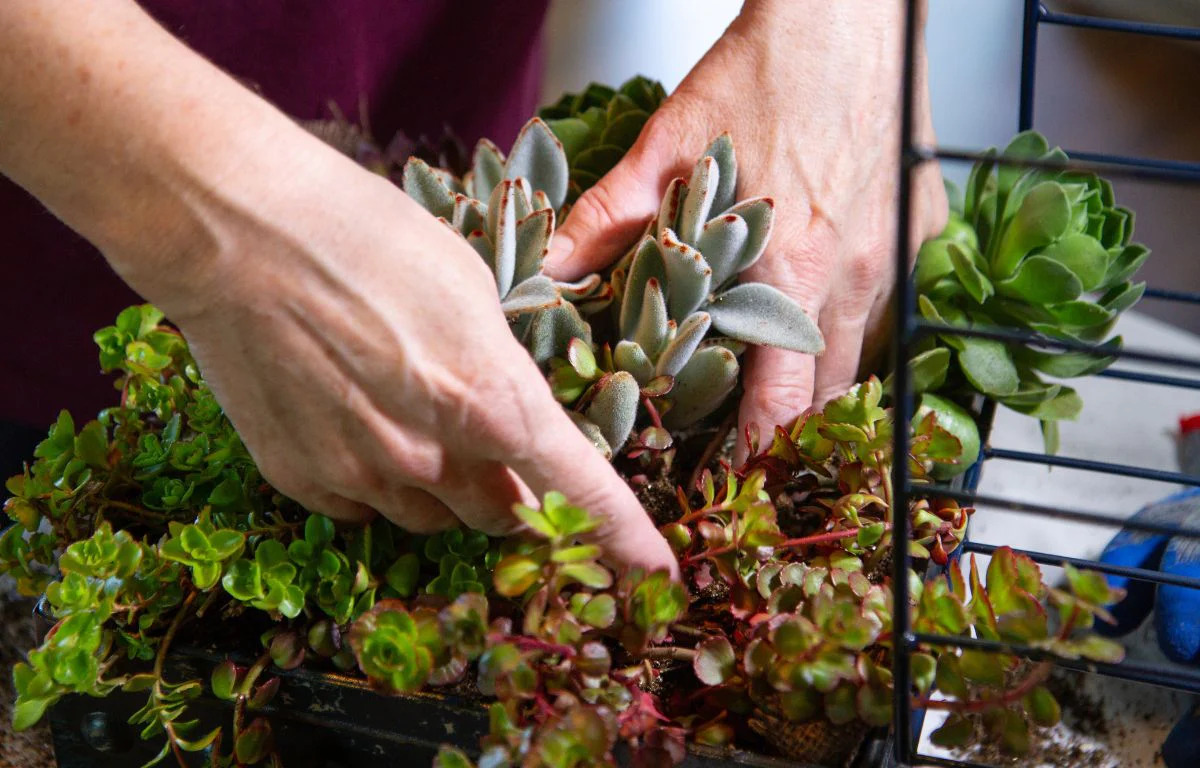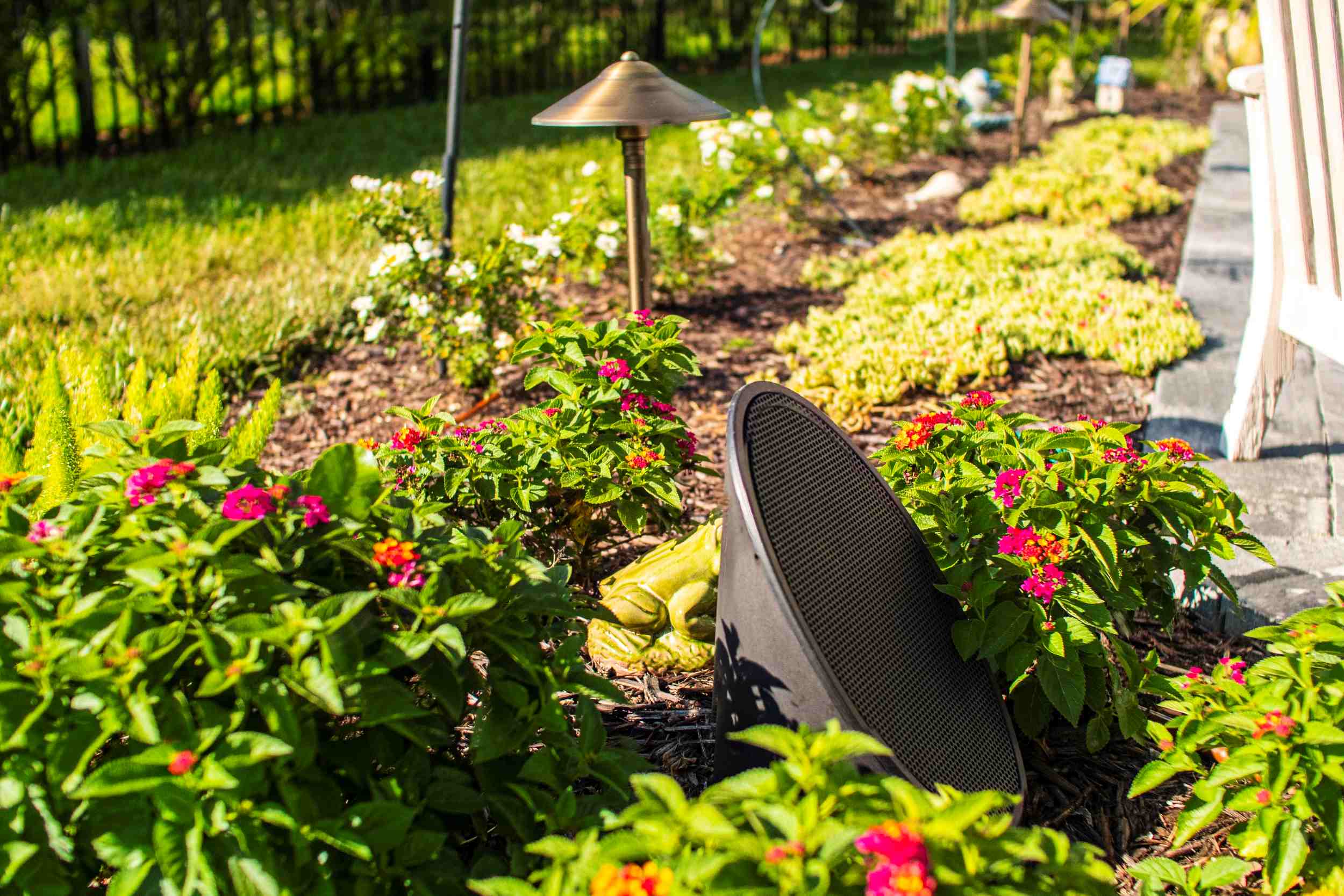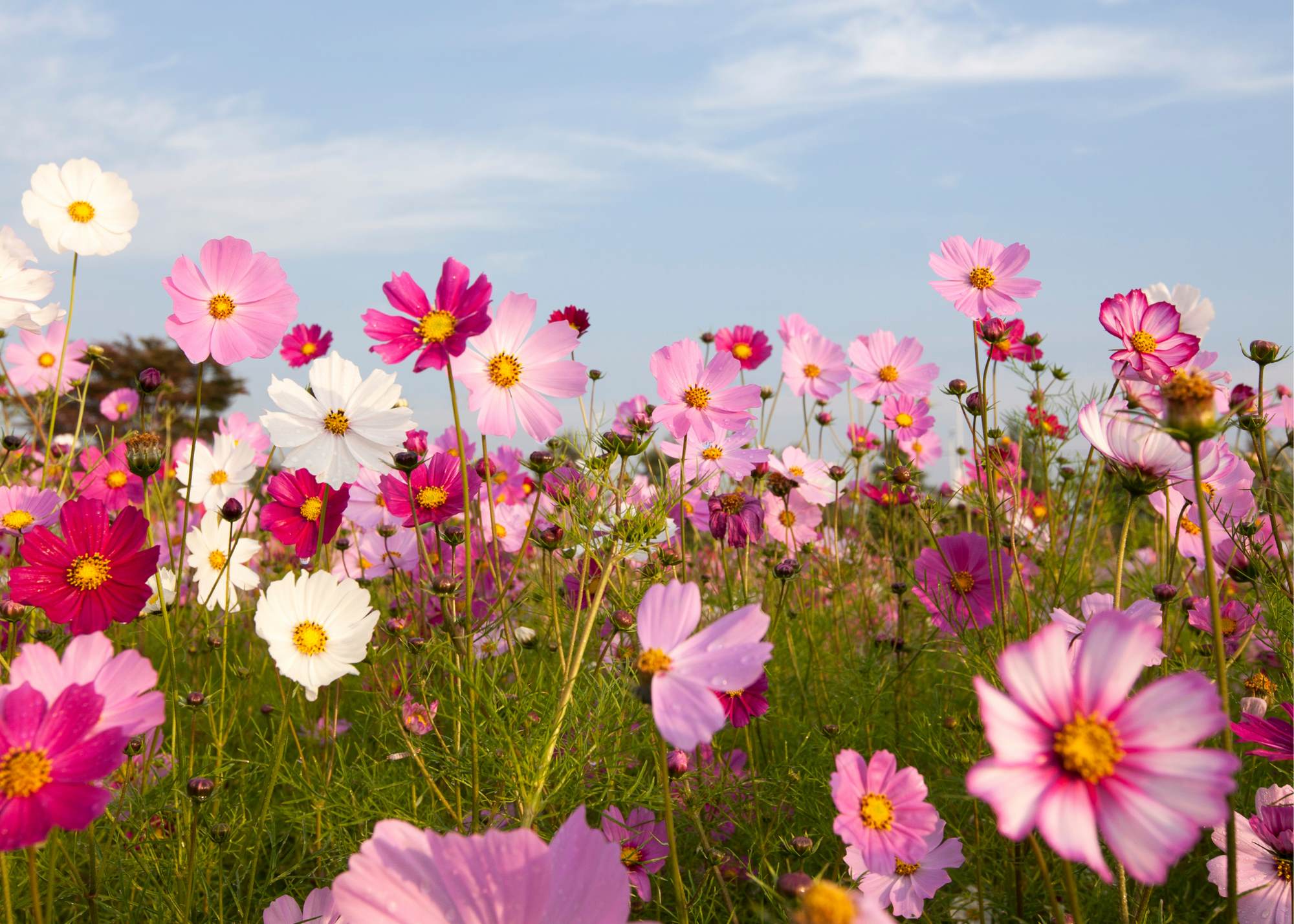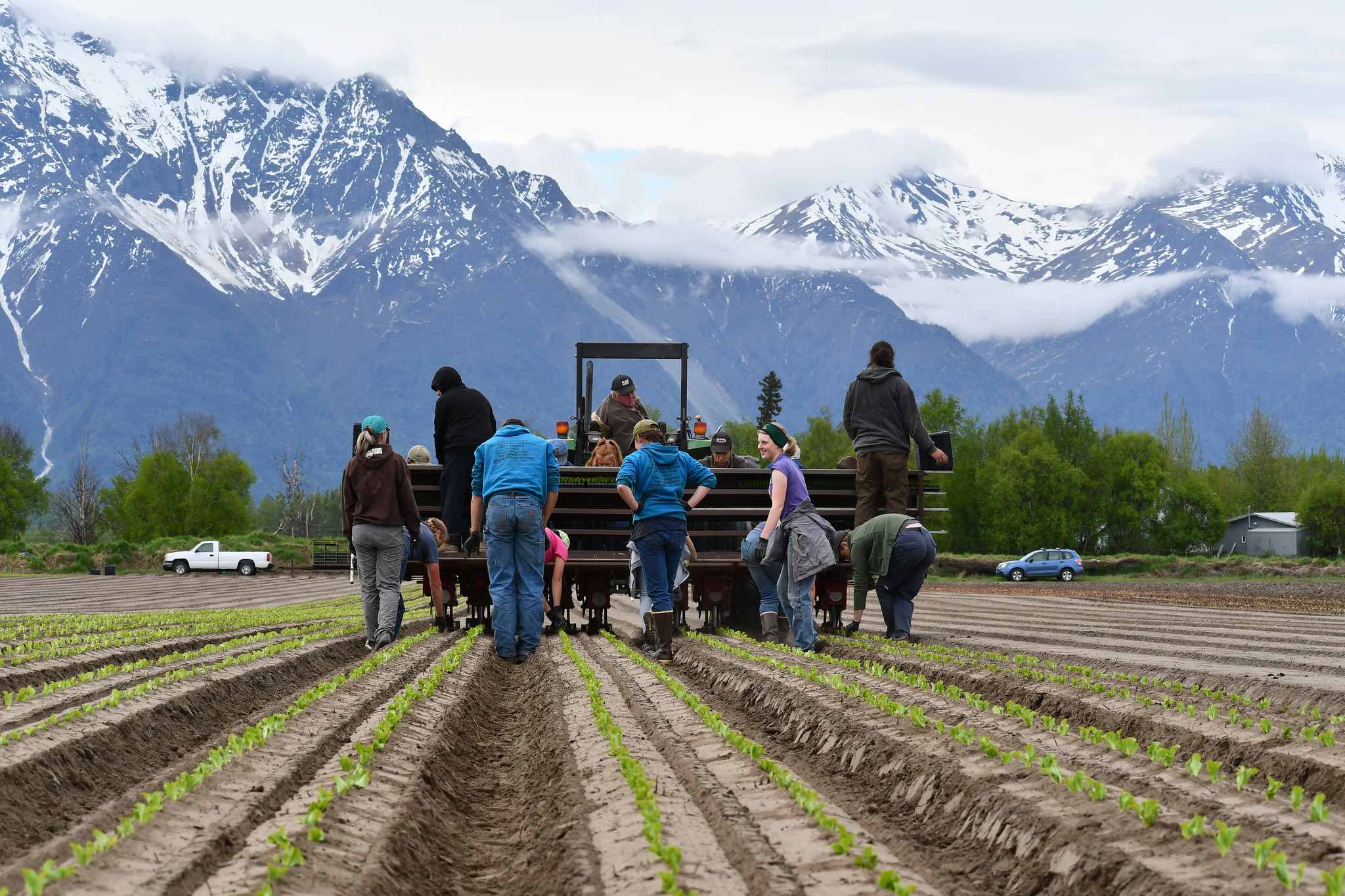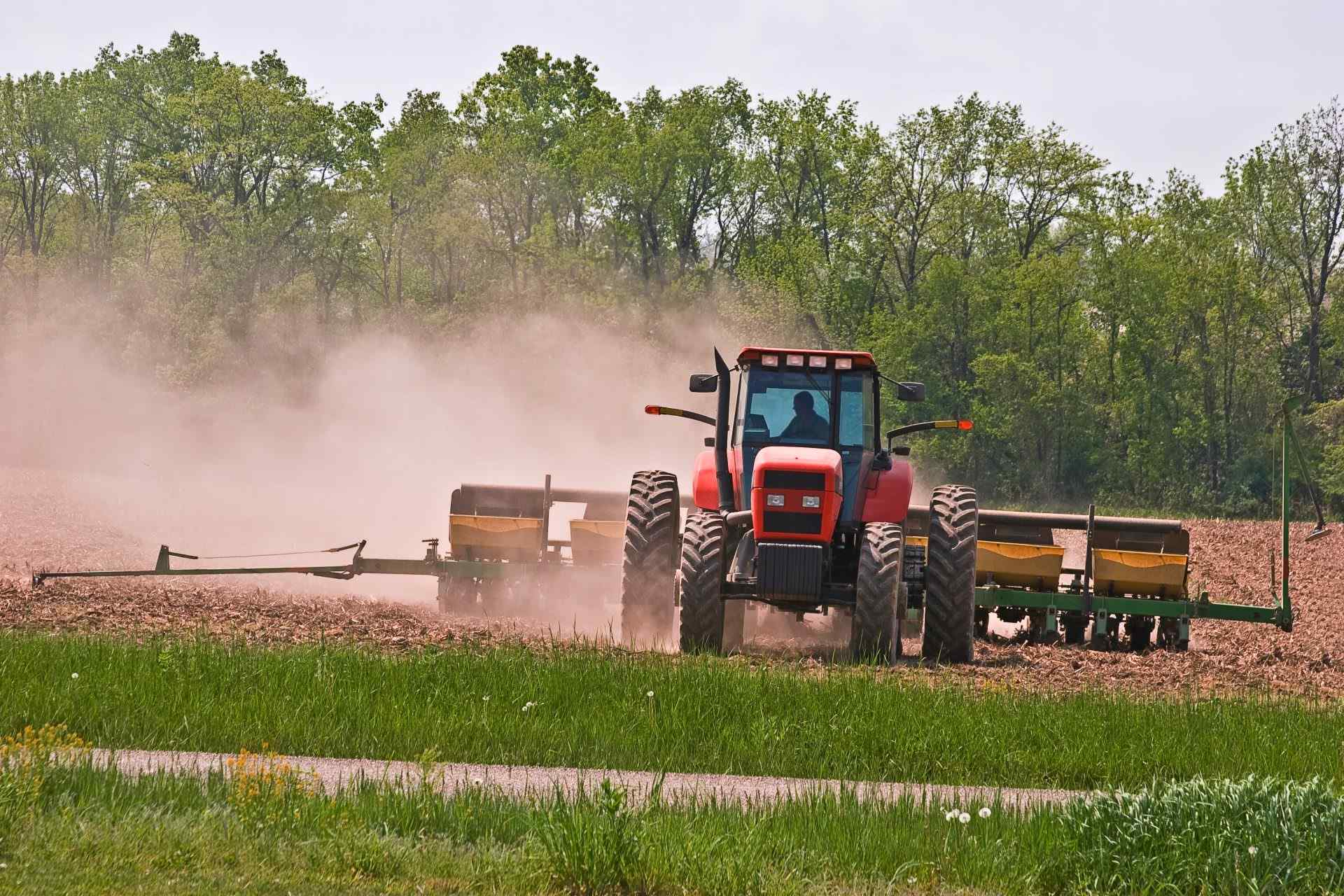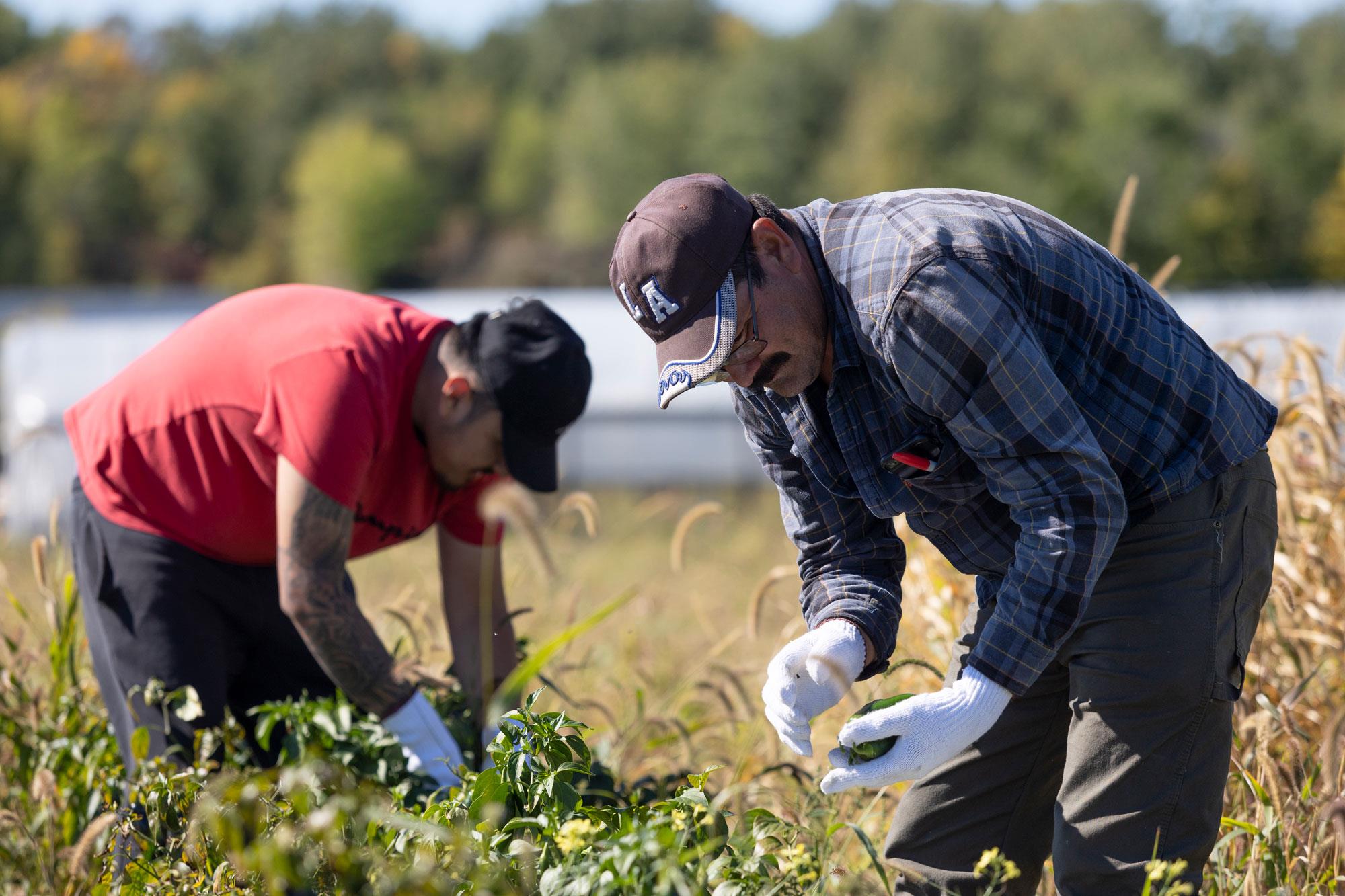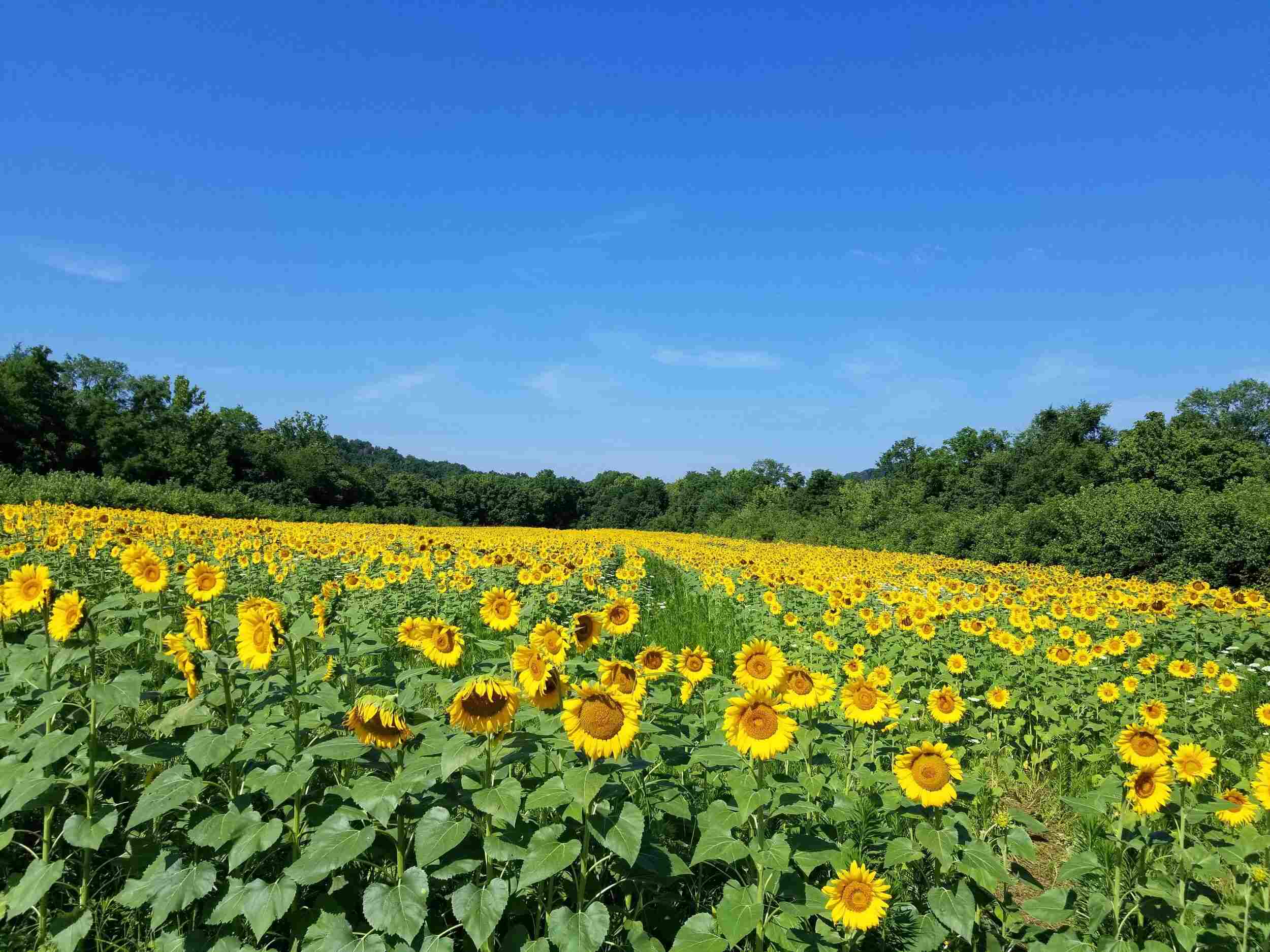Home>Gardening Basics>Getting Started>How To Know What Zone You Live In For Planting
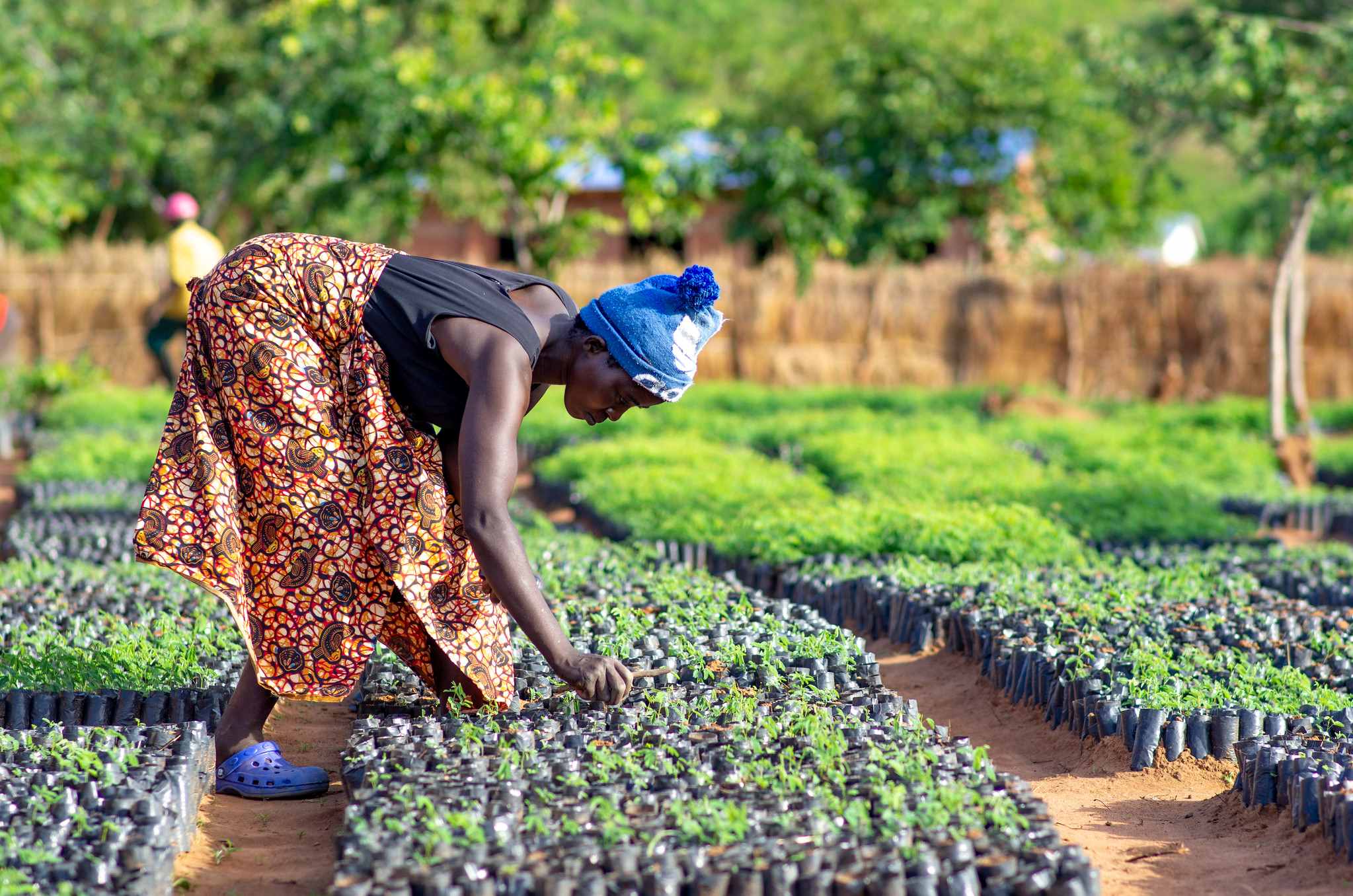

Getting Started
How To Know What Zone You Live In For Planting
Modified: January 22, 2024
Discover the easiest way to determine your planting zone in this helpful guide. Get started with understanding the right zone for your plants today!
(Many of the links in this article redirect to a specific reviewed product. Your purchase of these products through affiliate links helps to generate commission for Chicagolandgardening.com, at no extra cost. Learn more)
Table of Contents
Introduction
Welcome to the world of gardening! When it comes to successfully growing plants, understanding the concept of planting zones is crucial. Whether you are an experienced gardener or just starting out, knowing what zone you live in can make a significant difference in the health and longevity of your plants.
Planting zones, also known as hardiness zones, are geographical areas that are divided based on average minimum temperatures. These zones provide valuable information about the types of plants that are best suited to a particular region.
By understanding your planting zone, you can choose plants that are more likely to thrive in your specific climate conditions. This knowledge allows you to make informed decisions about what to plant and when to plant it, increasing the likelihood of a successful garden.
In this article, we will explore the concept of planting zones, discuss the factors that influence them, and provide guidance on how to identify the zone you live in. We will also share some online resources and tools that can help you determine your planting zone with ease.
So, whether you’re planning a vegetable garden, creating a colorful flowerbed, or adding some greenery to your indoor space, let’s dive into the world of planting zones and discover how they can help you achieve gardening success!
Understanding Planting Zones
Planting zones, also referred to as hardiness zones, are a way to categorize and understand the different climatic conditions that plants can tolerate. These zones are determined based on the average minimum temperatures experienced in different regions. By dividing the world into specific zones, gardeners and plant enthusiasts can identify which plants are likely to thrive in their respective areas.
The concept of planting zones was first introduced by the United States Department of Agriculture (USDA) in 1960. The USDA Plant Hardiness Zone Map is widely used to determine the appropriate zones for various plants. The map divides the United States into 13 different zones, each representing a 10°F difference in the average annual minimum temperature.
Understanding planting zones is essential because plants have specific temperature requirements for optimal growth and survival. Some plants are more tolerant of cold temperatures, while others thrive in warmer climates. By selecting plants that are well-suited to your planting zone, you can significantly increase your chances of having a successful garden.
In addition to temperature, planting zones also consider other factors such as humidity, rainfall, and sunlight. These factors collectively determine the overall climate of a region and play a crucial role in determining which plants will thrive and which may struggle to survive.
It’s important to note that planting zones are not fixed and can evolve over time due to climate change. As temperatures shift, certain zones may expand or contract, which means that some plants may no longer be suitable for certain regions.
By familiarizing yourself with planting zones and understanding the specific characteristics of your zone, you can make more informed decisions about which plants to grow in your garden. This knowledge helps you create an environment that is conducive to healthy plant growth and ensures that your efforts in landscaping or gardening are rewarded.
Factors Influencing Planting Zones
Planting zones are influenced by various factors that determine the suitability of different plants in specific geographic regions. Understanding these factors can help you make informed decisions about the types of plants that will thrive in your local climate. Here are some of the key factors that influence planting zones:
1. Temperature: The average minimum temperature is the primary factor considered when defining planting zones. Different plants have different temperature requirements, and planting zones help gardeners identify which plants are most likely to survive and thrive in their respective regions.
2. Elevation: Elevation plays a significant role in determining planting zones. Higher elevations generally experience cooler temperatures, which can impact the types of plants that can grow successfully. As you move up or down in elevation, the planting zone may change, requiring you to select plants accordingly.
3. Latitude: Latitude is another factor that affects planting zones. As you move closer to the poles, the climate becomes colder, and the planting zones change. Plants that are suitable for lower latitudes may not survive or thrive in higher latitudes due to the colder temperatures.
4. Proximity to Water Bodies: Proximity to large bodies of water, such as oceans or lakes, can moderate temperatures and influence planting zones. Coastal areas, for example, tend to have milder winters and cooler summers compared to inland regions at the same latitude. This difference in climate can impact the types of plants that can be grown successfully.
5. Microclimates: Microclimates refer to localized variations in climate within a larger region. Factors such as topography, wind patterns, and vegetation cover can create microclimates that differ from the overall planting zone. For example, a sheltered area in a garden may be warmer than the surrounding zone, allowing for the cultivation of more sensitive plants.
6. Annual Rainfall: The amount of rainfall a region receives also affects planting zones. Plants that require high moisture levels may struggle in regions with low rainfall, while plants that thrive in drier conditions may be better suited for areas with limited rainfall.
It is important to note that these factors interact with each other and can vary regionally. Therefore, it is crucial to consider all these factors when determining your planting zone and selecting suitable plants for your garden.
Understanding the factors influencing planting zones will give you valuable insights into the specific needs and requirements of the plants you plan to grow. By considering these factors, you can create a garden that is better suited to your local climate, increasing the chances of successful plant growth and a thriving garden.
Identifying Your Planting Zone
Identifying your planting zone is a crucial step in determining which plants will thrive in your specific climate. There are several methods you can use to identify your planting zone:
1. USDA Plant Hardiness Zone Map: The USDA Plant Hardiness Zone Map is the most widely used tool for identifying planting zones in the United States. The map divides the country into 13 different zones, each representing a 10°F difference in the average annual minimum temperature. To find your zone, you can either consult the interactive map available on the USDA website or refer to the printed map.
2. Local Gardening Resources: Local gardening resources, such as extension offices, botanical gardens, or gardening clubs, often have information specific to your region. They may provide planting zone maps or guides tailored to your area. These resources can offer valuable insights into the unique characteristics of your region’s climate and help you identify your planting zone.
3. Consulting Experienced Gardeners: Engaging with experienced gardeners in your community can provide firsthand knowledge about the specific challenges and recommendations for your planting zone. They can share insights and tips based on their own experiences and help you understand the nuances of gardening in your area.
4. Climate Data and Weather Patterns: Examining climate data and weather patterns can also help you identify your planting zone. You can access historical climate information from local weather stations or online resources. Look for average minimum temperature data to compare with the USDA Plant Hardiness Zone Map and determine the closest match.
5. Observation and Trial: Another approach is to observe the plants that are commonly grown in your area. Take note of the plants that thrive in your neighbors’ yards or local parks. These plants are likely to be well-suited to your planting zone. Conducting trial and error experiments with different plants can also be a helpful way to determine what grows best in your specific climate conditions.
Remember, identifying your planting zone is not a rigid determination, but rather a starting point. It provides a general guideline for selecting suitable plants, but other microclimatic factors specific to your immediate environment can also influence plant growth. Therefore, it’s important to remain observant and adaptable as you discover what works best in your garden.
By identifying your planting zone, you can make informed decisions about the types of plants that are best suited to your area’s climate conditions. This knowledge will guide your plant selections and significantly increase the chances of a successful, thriving garden.
Online Resources for Determining Planting Zones
In today’s digital age, there are numerous online resources available to help you determine your planting zone with ease. These resources provide convenient and accessible tools for gardeners of all levels. Here are some popular online resources for determining planting zones:
1. USDA Plant Hardiness Zone Map: The USDA website features an interactive Plant Hardiness Zone Map. Simply enter your zip code or location, and the map will display your corresponding planting zone. This tool provides a quick and reliable way to identify your zone based on the latest data.
2. Garden Planning Apps: Many gardening apps, such as Garden Compass, can help you determine your planting zone. These apps often offer personalized gardening advice based on your location, including information about the ideal planting dates, recommended plant varieties, and other valuable insights specific to your zone.
3. Online Gardening Forums: Online gardening forums and communities, such as GardenWeb or Houzz, can be great resources for exchanging gardening tips and information. Many of these forums have sections dedicated to discussing specific planting zones, allowing you to connect with other gardeners in your area and learn from their experiences.
4. Local Agriculture or Extension Offices: Local agriculture departments and extension offices often have websites with helpful resources, including planting zone information. These websites may provide zone-specific gardening guides, recommended plant lists, and local weather data to further assist you in planning your garden.
5. Seed Catalogs and Nurseries: Many seed catalogs and online nurseries provide planting zone information for each plant they offer. When browsing these catalogs or websites, pay attention to the zone recommendations provided by the sellers. This can help you make informed decisions about which plants are suitable for your specific zone.
6. Climate Data Websites: Websites that provide climate data, such as Weather Underground or Climate.gov, can be valuable resources for determining your planting zone. These platforms often offer historical weather data, including average minimum temperature records, which you can compare to the USDA Plant Hardiness Zone Map to find the closest match for your area.
Utilizing these online resources can help simplify the process of determining your planting zone and ensure that you have accurate and up-to-date information. Remember that while online resources are convenient, it’s always beneficial to cross-reference information from multiple sources to ensure accuracy and to consider any local variations or microclimates that may exist in your immediate area.
With the help of online resources, you can confidently plan and cultivate your garden, knowing which plants are best suited to your specific planting zone. These tools empower you to make informed choices and optimize your gardening success.
Using USDA Plant Hardiness Zone Map
The USDA Plant Hardiness Zone Map is a valuable tool for gardeners to determine their planting zone and select appropriate plants. Here are some key steps to effectively use the USDA Plant Hardiness Zone Map:
1. Access the Map: Visit the official USDA website to access the Plant Hardiness Zone Map. The map is available online and can be accessed by entering your zip code or location. This will allow you to view the specific zone that corresponds to your area.
2. Interact with the Map: Once you access the map, you can interact with it to explore different regions and zones. You can zoom in and out, click on specific locations, and navigate through the map to find your precise area.
3. Identify Your Zone: Enter your zip code or location in the designated search box or click on your area of interest to view the corresponding planting zone. The map will display a color-coded zone that represents the average minimum temperatures experienced in that region.
4. Understand the Zone: Once you identify your planting zone, it’s important to understand the characteristics and limitations associated with it. Each zone represents a specific range of temperatures, indicating the plants that are most likely to thrive in that region.
5. Consider Zone Extensions: The USDA Plant Hardiness Zone Map also features zone extensions, denoted by adding an “a” or “b” suffix to the main zone numbers. These extensions signify areas within the main zone that have slightly different climate conditions, such as coastal or high elevation regions.
6. Consult Planting Guides: After determining your planting zone, you can consult planting guides specific to your zone. These guides provide recommendations on suitable plant varieties, ideal planting dates, and other relevant information to help you make informed decisions for your garden.
7. Stay Updated: It’s advisable to check for updates to the USDA Plant Hardiness Zone Map periodically. As climate patterns shift, zones may change, and new data may become available. Staying informed with the latest information ensures that you are working with the most accurate zone information for your area.
Remember that while the USDA Plant Hardiness Zone Map is a valuable resource, it’s not the sole determining factor for successful gardening. Factors such as soil quality, sun exposure, and microclimates within your specific location should also be considered when selecting plants.
By utilizing the USDA Plant Hardiness Zone Map, you can make informed decisions about which plants are suitable for your area’s climate conditions. This knowledge enhances your gardening experience and increases the likelihood of a thriving and resilient garden.
Interpreting Planting Zone Information
Interpreting planting zone information is essential to make informed decisions about which plants will thrive in your specific climate. Here are some key aspects to consider when interpreting planting zone information:
1. Temperature Range: Planting zones are primarily based on the average minimum temperatures experienced in a specific region. Each zone represents a range of temperatures that plants can tolerate. It’s important to understand the temperature range of your zone as it directly impacts the types of plants that can thrive in your area.
2. Hardiness of Plants: Different plants have varying levels of hardiness and can withstand different temperature extremes. When interpreting planting zone information, consider the specific hardiness ratings of the plants you’re interested in. Some plants may be labeled as hardy to a particular zone or have a broader range of adaptability, allowing them to be grown in different zones.
3. Frost Dates: Planting zone information often provides guidance on first and last frost dates. These dates indicate the expected periods when frost is likely to occur. Understanding your zone’s frost dates is important for timing your gardening activities, such as planting seeds or transplanting seedlings, to avoid potential damage from late or early frost events.
4. Climate Constraints: Planting zone information can also reveal climate constraints specific to your region. For example, some zones may experience high humidity, drought, or strong winds. These factors can impact plant selection and require you to choose plants that are more tolerant or adapted to such conditions. Consider these climate constraints when planning your garden.
5. Microclimates: It’s worth noting that planting zones are a general guide and may not account for microclimates within your specific location. Microclimates are localized variations in temperature and growing conditions that can occur due to factors such as topography, buildings, or vegetation cover. Pay attention to any microclimates in your garden that may differ from the overall planting zone and adjust plant selection accordingly.
6. Experimentation and Observation: While planting zone information provides valuable guidance, it’s important to remember that gardening can involve trial and error. Experimenting with different plant varieties and observing their performance in your specific zone and garden can help refine your understanding of which plants thrive best in your conditions.
Interpreting planting zone information allows you to make informed decisions when selecting plants for your garden. It provides a starting point for understanding the climate constraints and temperature ranges that impact plant growth. By considering the specific needs and adaptations of different plants, you can create a garden that is well-suited to your planting zone and enjoy a more successful gardening experience.
Adjusting Plant Selection Based on Zone
Choosing the right plants for your garden involves considering your planting zone and making adjustments to ensure optimal growth and success. Here are some important considerations when adjusting plant selection based on your zone:
1. Select Zone-Appropriate Plants: Start by selecting plants that are recommended for your specific planting zone. These plants have a better chance of thriving in your climate conditions and are more likely to be resilient to temperature extremes. The USDA Plant Hardiness Zone Map and other resources provide plant lists and recommendations tailored to each zone.
2. Know the Growth Requirements: Consider the specific growth requirements of the plants you’re interested in. Each plant has unique needs in terms of sunlight, soil type, moisture, and pH levels. Make sure the plants you choose are compatible with your zone’s climate and can thrive in the specific conditions present in your garden.
3. Check Cold Hardiness Ratings: Pay attention to the cold hardiness ratings of plants, particularly for perennials and shrubs. These ratings indicate the plant’s ability to withstand low temperatures. Look for plants with cold hardiness ratings that align with or exceed the minimum temperatures in your planting zone.
4. Consider Shorter Growing Seasons: If you live in a colder zone with a shorter growing season, select plants that have shorter maturation periods or choose varieties specifically bred for colder climates. This allows you to maximize your gardening season and enjoy a greater variety of plants in your garden.
5. Protect Plants during Extreme Weather: Even if you choose plants suitable for your zone, it’s important to protect them during extreme weather events. This can include providing shelter, mulching, or using row covers during cold snaps to protect plants from frost or using shade cloth during heatwaves to shield plants from excessive heat.
6. Embrace Native and Local Varieties: Native plants and varieties that are adapted to your region are often well-suited to the climate and environmental conditions of your zone. They are typically more resilient, require less maintenance, and support local ecosystems. Consider incorporating native and locally adapted plants into your garden for a more sustainable and thriving landscape.
7. Learn from Gardening Experts: Seek advice from local gardening experts, such as horticulturists or experienced gardeners familiar with your planting zone. They can provide valuable insights, recommendations, and tips for selecting and caring for plants specific to your zone’s needs.
8. Observe Plant Performance: Finally, pay attention to how the plants in your garden are performing. Monitor their growth, check for signs of stress or adaptability issues, and make adjustments as needed. Not all plants within a specific zone will thrive equally in every garden due to microclimates, soil variations, or other factors. By being attentive and responsive, you can fine-tune your plant selection over time.
By adjusting plant selection based on your zone, you increase the likelihood of success and create a garden that is well-adapted to your climate conditions. Remember, gardening is a continuous learning process, and being open to experimentation and observation will help you discover the perfect plants for your specific planting zone.
Conclusion
Understanding and utilizing planting zones is a key aspect of successful gardening. By knowing your planting zone, you can select plants that are best suited to your climate conditions, increasing their chances of thriving and producing beautiful blooms or bountiful harvests.
Throughout this article, we have explored the concept of planting zones, the factors that influence them, and how to identify your specific zone. We have discussed the importance of online resources, such as the USDA Plant Hardiness Zone Map, in determining your zone and provided guidance on interpreting the information provided by these resources.
Adjusting plant selection based on your zone is crucial to create a healthy and resilient garden. By selecting zone-appropriate plants, considering growth requirements, and being aware of specific climate constraints, you can optimize the success of your garden and minimize the risk of plant loss.
It’s important to remember that while planting zones provide valuable guidance, they are not the sole determining factor for successful gardening. Other factors, such as soil quality, sunlight exposure, and microclimates within your immediate area, should also be considered in plant selection.
Lastly, gardening is a continual learning process. Observe, experiment, and adapt over time to discover the plants that thrive best in your specific planting zone and unique garden environment. Connect with local gardening experts and fellow enthusiasts to exchange knowledge and experiences.
So, armed with the knowledge of planting zones, embrace your gardening journey with confidence. Whether you’re cultivating a lush flowerbed, sowing vegetables for a bountiful harvest, or adding greenery to your indoor spaces, understanding your planting zone will serve as a valuable tool, paving the way for gardening success.
